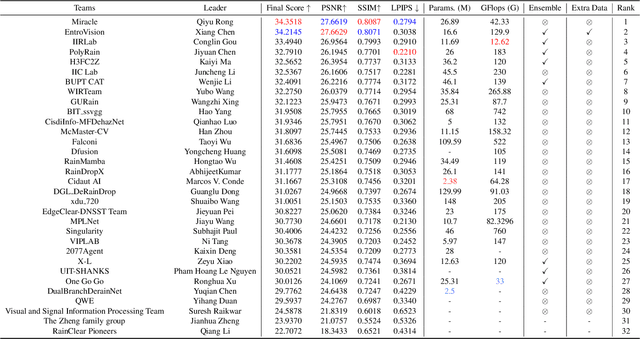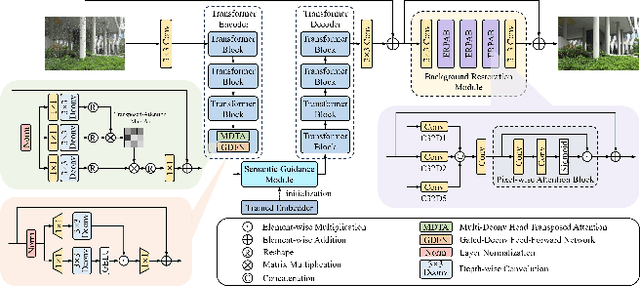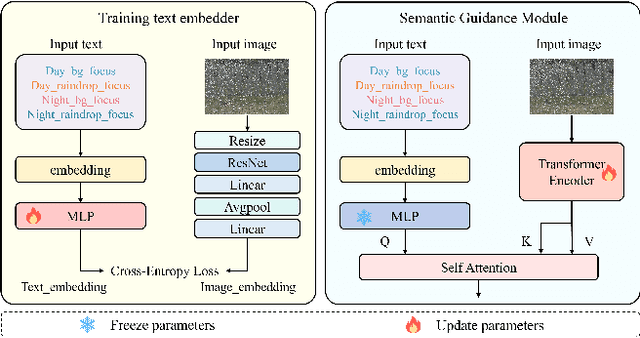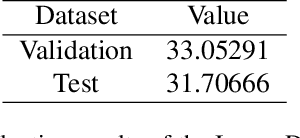Bihan Wen
School of Electrical and Electronic Engineering, Nanyang Technological University
FailSafe: Reasoning and Recovery from Failures in Vision-Language-Action Models
Oct 02, 2025Abstract:Recent advances in robotic manipulation have integrated low-level robotic control into Vision-Language Models (VLMs), extending them into Vision-Language-Action (VLA) models. Although state-of-the-art VLAs achieve strong performance in downstream robotic applications, supported by large-scale crowd-sourced robot training data, they still inevitably encounter failures during execution. Enabling robots to reason about and recover from unpredictable and abrupt failures remains a critical challenge. Existing robotic manipulation datasets, collected in either simulation or the real world, primarily provide only ground-truth trajectories, leaving robots unable to recover once failures occur. Moreover, the few datasets that address failure detection typically offer only textual explanations, which are difficult to utilize directly in VLA models. To address this gap, we introduce FailSafe, a novel failure generation and recovery system that automatically produces diverse failure cases paired with executable recovery actions. FailSafe can be seamlessly applied to any manipulation task in any simulator, enabling scalable creation of failure-action data. To demonstrate its effectiveness, we fine-tune LLaVa-OneVision-7B (LLaVa-OV-7B) to build FailSafe-VLM. Experimental results show that FailSafe-VLM successfully helps robotic arm detect and recover from potential failures, improving the performance of three state-of-the-art VLA models pi0-FAST, OpenVLA, OpenVLA-OFT) by up to 22.6% on average across several tasks in Maniskill. Furthermore, FailSafe-VLM could generalize across different spatial configurations, camera viewpoints, and robotic embodiments. We plan to release the FailSafe code to the community.
RF4D:Neural Radar Fields for Novel View Synthesis in Outdoor Dynamic Scenes
May 27, 2025Abstract:Neural fields (NFs) have demonstrated remarkable performance in scene reconstruction, powering various tasks such as novel view synthesis. However, existing NF methods relying on RGB or LiDAR inputs often exhibit severe fragility to adverse weather, particularly when applied in outdoor scenarios like autonomous driving. In contrast, millimeter-wave radar is inherently robust to environmental changes, while unfortunately, its integration with NFs remains largely underexplored. Besides, as outdoor driving scenarios frequently involve moving objects, making spatiotemporal modeling essential for temporally consistent novel view synthesis. To this end, we introduce RF4D, a radar-based neural field framework specifically designed for novel view synthesis in outdoor dynamic scenes. RF4D explicitly incorporates temporal information into its representation, significantly enhancing its capability to model moving objects. We further introduce a feature-level flow module that predicts latent temporal offsets between adjacent frames, enforcing temporal coherence in dynamic scene modeling. Moreover, we propose a radar-specific power rendering formulation closely aligned with radar sensing physics, improving synthesis accuracy and interoperability. Extensive experiments on public radar datasets demonstrate the superior performance of RF4D in terms of radar measurement synthesis quality and occupancy estimation accuracy, achieving especially pronounced improvements in dynamic outdoor scenarios.
Sparc3D: Sparse Representation and Construction for High-Resolution 3D Shapes Modeling
May 21, 2025Abstract:High-fidelity 3D object synthesis remains significantly more challenging than 2D image generation due to the unstructured nature of mesh data and the cubic complexity of dense volumetric grids. Existing two-stage pipelines-compressing meshes with a VAE (using either 2D or 3D supervision), followed by latent diffusion sampling-often suffer from severe detail loss caused by inefficient representations and modality mismatches introduced in VAE. We introduce Sparc3D, a unified framework that combines a sparse deformable marching cubes representation Sparcubes with a novel encoder Sparconv-VAE. Sparcubes converts raw meshes into high-resolution ($1024^3$) surfaces with arbitrary topology by scattering signed distance and deformation fields onto a sparse cube, allowing differentiable optimization. Sparconv-VAE is the first modality-consistent variational autoencoder built entirely upon sparse convolutional networks, enabling efficient and near-lossless 3D reconstruction suitable for high-resolution generative modeling through latent diffusion. Sparc3D achieves state-of-the-art reconstruction fidelity on challenging inputs, including open surfaces, disconnected components, and intricate geometry. It preserves fine-grained shape details, reduces training and inference cost, and integrates naturally with latent diffusion models for scalable, high-resolution 3D generation.
DEEMO: De-identity Multimodal Emotion Recognition and Reasoning
Apr 28, 2025Abstract:Emotion understanding is a critical yet challenging task. Most existing approaches rely heavily on identity-sensitive information, such as facial expressions and speech, which raises concerns about personal privacy. To address this, we introduce the De-identity Multimodal Emotion Recognition and Reasoning (DEEMO), a novel task designed to enable emotion understanding using de-identified video and audio inputs. The DEEMO dataset consists of two subsets: DEEMO-NFBL, which includes rich annotations of Non-Facial Body Language (NFBL), and DEEMO-MER, an instruction dataset for Multimodal Emotion Recognition and Reasoning using identity-free cues. This design supports emotion understanding without compromising identity privacy. In addition, we propose DEEMO-LLaMA, a Multimodal Large Language Model (MLLM) that integrates de-identified audio, video, and textual information to enhance both emotion recognition and reasoning. Extensive experiments show that DEEMO-LLaMA achieves state-of-the-art performance on both tasks, outperforming existing MLLMs by a significant margin, achieving 74.49% accuracy and 74.45% F1-score in de-identity emotion recognition, and 6.20 clue overlap and 7.66 label overlap in de-identity emotion reasoning. Our work contributes to ethical AI by advancing privacy-preserving emotion understanding and promoting responsible affective computing.
PAD: Phase-Amplitude Decoupling Fusion for Multi-Modal Land Cover Classification
Apr 27, 2025Abstract:The fusion of Synthetic Aperture Radar (SAR) and RGB imagery for land cover classification remains challenging due to modality heterogeneity and the underutilization of spectral complementarity. Existing methods often fail to decouple shared structural features from modality-specific radiometric attributes, leading to feature conflicts and information loss. To address this issue, we propose Phase-Amplitude Decoupling (PAD), a frequency-aware framework that separates phase (modality-shared) and amplitude (modality-specific) components in the Fourier domain. Specifically, PAD consists of two key components: 1) Phase Spectrum Correction (PSC), which aligns cross-modal phase features through convolution-guided scaling to enhance geometric consistency, and 2) Amplitude Spectrum Fusion (ASF), which dynamically integrates high-frequency details and low-frequency structures using frequency-adaptive multilayer perceptrons. This approach leverages SAR's sensitivity to morphological features and RGB's spectral richness. Extensive experiments on WHU-OPT-SAR and DDHR-SK datasets demonstrate state-of-the-art performance. Our work establishes a new paradigm for physics-aware multi-modal fusion in remote sensing. The code will be available at https://github.com/RanFeng2/PAD.
NTIRE 2025 Challenge on Day and Night Raindrop Removal for Dual-Focused Images: Methods and Results
Apr 19, 2025



Abstract:This paper reviews the NTIRE 2025 Challenge on Day and Night Raindrop Removal for Dual-Focused Images. This challenge received a wide range of impressive solutions, which are developed and evaluated using our collected real-world Raindrop Clarity dataset. Unlike existing deraining datasets, our Raindrop Clarity dataset is more diverse and challenging in degradation types and contents, which includes day raindrop-focused, day background-focused, night raindrop-focused, and night background-focused degradations. This dataset is divided into three subsets for competition: 14,139 images for training, 240 images for validation, and 731 images for testing. The primary objective of this challenge is to establish a new and powerful benchmark for the task of removing raindrops under varying lighting and focus conditions. There are a total of 361 participants in the competition, and 32 teams submitting valid solutions and fact sheets for the final testing phase. These submissions achieved state-of-the-art (SOTA) performance on the Raindrop Clarity dataset. The project can be found at https://lixinustc.github.io/CVPR-NTIRE2025-RainDrop-Competition.github.io/.
Digital Staining with Knowledge Distillation: A Unified Framework for Unpaired and Paired-But-Misaligned Data
Apr 14, 2025Abstract:Staining is essential in cell imaging and medical diagnostics but poses significant challenges, including high cost, time consumption, labor intensity, and irreversible tissue alterations. Recent advances in deep learning have enabled digital staining through supervised model training. However, collecting large-scale, perfectly aligned pairs of stained and unstained images remains difficult. In this work, we propose a novel unsupervised deep learning framework for digital cell staining that reduces the need for extensive paired data using knowledge distillation. We explore two training schemes: (1) unpaired and (2) paired-but-misaligned settings. For the unpaired case, we introduce a two-stage pipeline, comprising light enhancement followed by colorization, as a teacher model. Subsequently, we obtain a student staining generator through knowledge distillation with hybrid non-reference losses. To leverage the pixel-wise information between adjacent sections, we further extend to the paired-but-misaligned setting, adding the Learning to Align module to utilize pixel-level information. Experiment results on our dataset demonstrate that our proposed unsupervised deep staining method can generate stained images with more accurate positions and shapes of the cell targets in both settings. Compared with competing methods, our method achieves improved results both qualitatively and quantitatively (e.g., NIQE and PSNR).We applied our digital staining method to the White Blood Cell (WBC) dataset, investigating its potential for medical applications.
Training-Free Text-Guided Image Editing with Visual Autoregressive Model
Mar 31, 2025Abstract:Text-guided image editing is an essential task that enables users to modify images through natural language descriptions. Recent advances in diffusion models and rectified flows have significantly improved editing quality, primarily relying on inversion techniques to extract structured noise from input images. However, inaccuracies in inversion can propagate errors, leading to unintended modifications and compromising fidelity. Moreover, even with perfect inversion, the entanglement between textual prompts and image features often results in global changes when only local edits are intended. To address these challenges, we propose a novel text-guided image editing framework based on VAR (Visual AutoRegressive modeling), which eliminates the need for explicit inversion while ensuring precise and controlled modifications. Our method introduces a caching mechanism that stores token indices and probability distributions from the original image, capturing the relationship between the source prompt and the image. Using this cache, we design an adaptive fine-grained masking strategy that dynamically identifies and constrains modifications to relevant regions, preventing unintended changes. A token reassembling approach further refines the editing process, enhancing diversity, fidelity, and control. Our framework operates in a training-free manner and achieves high-fidelity editing with faster inference speeds, processing a 1K resolution image in as fast as 1.2 seconds. Extensive experiments demonstrate that our method achieves performance comparable to, or even surpassing, existing diffusion- and rectified flow-based approaches in both quantitative metrics and visual quality. The code will be released.
Reconciling Stochastic and Deterministic Strategies for Zero-shot Image Restoration using Diffusion Model in Dual
Mar 03, 2025Abstract:Plug-and-play (PnP) methods offer an iterative strategy for solving image restoration (IR) problems in a zero-shot manner, using a learned \textit{discriminative denoiser} as the implicit prior. More recently, a sampling-based variant of this approach, which utilizes a pre-trained \textit{generative diffusion model}, has gained great popularity for solving IR problems through stochastic sampling. The IR results using PnP with a pre-trained diffusion model demonstrate distinct advantages compared to those using discriminative denoisers, \ie improved perceptual quality while sacrificing the data fidelity. The unsatisfactory results are due to the lack of integration of these strategies in the IR tasks. In this work, we propose a novel zero-shot IR scheme, dubbed Reconciling Diffusion Model in Dual (RDMD), which leverages only a \textbf{single} pre-trained diffusion model to construct \textbf{two} complementary regularizers. Specifically, the diffusion model in RDMD will iteratively perform deterministic denoising and stochastic sampling, aiming to achieve high-fidelity image restoration with appealing perceptual quality. RDMD also allows users to customize the distortion-perception tradeoff with a single hyperparameter, enhancing the adaptability of the restoration process in different practical scenarios. Extensive experiments on several IR tasks demonstrate that our proposed method could achieve superior results compared to existing approaches on both the FFHQ and ImageNet datasets.
Triply Laplacian Scale Mixture Modeling for Seismic Data Noise Suppression
Feb 20, 2025Abstract:Sparsity-based tensor recovery methods have shown great potential in suppressing seismic data noise. These methods exploit tensor sparsity measures capturing the low-dimensional structures inherent in seismic data tensors to remove noise by applying sparsity constraints through soft-thresholding or hard-thresholding operators. However, in these methods, considering that real seismic data are non-stationary and affected by noise, the variances of tensor coefficients are unknown and may be difficult to accurately estimate from the degraded seismic data, leading to undesirable noise suppression performance. In this paper, we propose a novel triply Laplacian scale mixture (TLSM) approach for seismic data noise suppression, which significantly improves the estimation accuracy of both the sparse tensor coefficients and hidden scalar parameters. To make the optimization problem manageable, an alternating direction method of multipliers (ADMM) algorithm is employed to solve the proposed TLSM-based seismic data noise suppression problem. Extensive experimental results on synthetic and field seismic data demonstrate that the proposed TLSM algorithm outperforms many state-of-the-art seismic data noise suppression methods in both quantitative and qualitative evaluations while providing exceptional computational efficiency.
 Add to Chrome
Add to Chrome Add to Firefox
Add to Firefox Add to Edge
Add to Edge